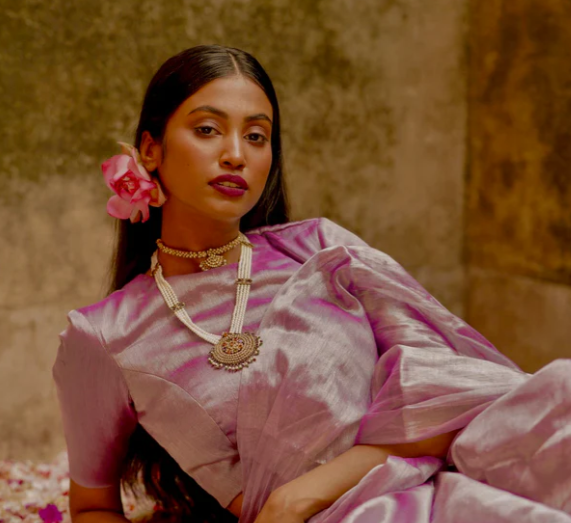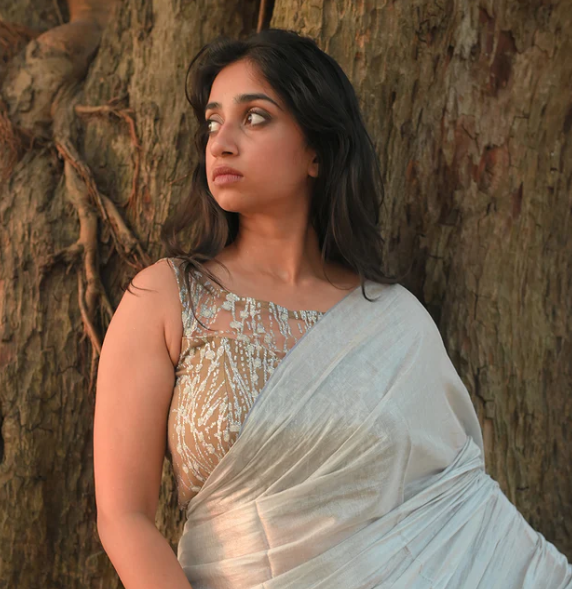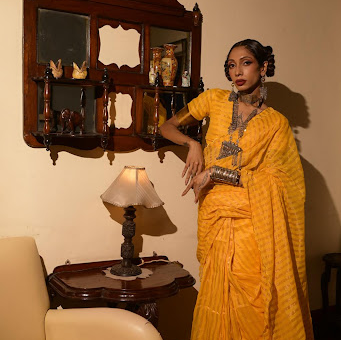
Top 5 Handloom Fabrics For Sustainable Wardrobe
Are you the one who likes mindful living? Are you conscious of the fabrics you wear? Sustainable fabrics are your perfect partner if you are all for a greener environment. Wearing clothing made and sourced sustainably is a step towards the environment and future. While synthetic and mass-produced textiles for fast fashion are ruling the market, ethical and sustainable fashion is also gaining popularity.
Handloom fabrics are soft, comfortable and environmentally responsible substitutes, crafted by expert weavers utilizing age-old methods. Sustainable fabrics help local communities, protect cultural heritage and lessen our environmental impact. Let's look at the top 5 sustainable handloom fabrics that will improve your look and benefit the environment.
What are Sustainable Fabrics?
But first, let us understand what are sustainable fabrics and how you differentiate between mass-produced fabrics and sustainable fabrics. The answer often lies in the correct questions.
Origin
It is a good idea to check where your fabric originates from - does it come from an animal, from destroying farming and agricultural practices, or from the removal of raw materials? Or were the materials recycled or cultivated sustainably?
Process
Mass-produced textiles require bleaching, colouring with carcinogenic dyes, and chemical processing like using formaldehyde to prevent fabrics from wrinkling. Whereas, sustainable fabric processing techniques include knitting, weaving, and using non-toxic dyes.
Life of Fabric
Did you know that 7.7% of municipal solid waste in landfills is made up of textiles, and many non-sustainable fabrics wind up in the trash? Sustainable fabrics like linen, and handloom cotton, have a longer life and are easy to maintain.
Top 5 Sustainable Handloom Fabrics
Let us look at some of the sustainable fabrics and handloom textiles that will ensure you have a green wardrobe.
1. Organic Cotton
Although cotton is a natural fibre and widely used in clothing, conventional cotton farming requires large quantities of water and pesticides which might be harmful to the environment. However, organic cotton is grown without the use of chemicals or pesticides, it is far less harmful to the environment than regular cotton. If your cotton is GOTS-certified, you know it's a sustainable handloom fabric. Recycled cotton is an even more environmentally friendly choice if you want to take things a step further.
2. Organic-Linen
Linen is a low-maintenance plant and is being grown for hundreds of years. When left untreated linen can biodegrade making it a suitable fabric for sustainable fashion. Additionally, organic linen is robust, lightweight, soft, and naturally resistant to moths.
There is also very little waste because the entire plant can be used to make linen fabric. Even though the fabric will release some emissions during the manufacturing process, it is still one of the most environmentally friendly options available.
3. Bamboo
Did you know bamboo is one of the fastest-growing plants on earth? Bamboo with its natural antifungal and anti-bacterial properties is one of those plants that doesn’t require chemical fertilizers or pesticides. Moreover, bamboo fibre - the highly appreciated sustainable fabric is moisture absorbent - it can absorb up to three times its weight in water.
4. Organic Hemp
Hemp is a versatile and adaptable plant that can be used to make a wide range of products, including fabrics, food, and even building materials. It is in fact one of the oldest textiles used to make clothes, having been used for hundreds of years because it is suitable for all seasons and gets softer with repeated washings. Hemp requires very little upkeep. It is inherently environmentally friendly, requires little water, and doesn't require pesticides, making it an ideal sustainable fabric. Hemp even replenishes the soil with nutrients! Hemp is a genuinely sustainable fabric if it is grown organically without the use of chemicals to expedite the process.
5. Jute
Jute is a natural fibre, which is known for being an eco-friendly substitute for synthetic fabrics. Being one of the strongest natural fibres, jute has a long lifespan. Additionally, this sustainable fabric is compostable and biodegradable, which lessens its impact on the environment.
Jute plants don't need a lot of chemicals or pesticides to grow quickly making their production more sustainable than that of many other textile crops. Jute textiles are comfortable to wear because they are moisture-wicking, breathable, and hypoallergenic.
Although jute was originally used in the industrial sector, it is now utilized to make a variety of goods, such as bags, apparel, home goods, and even jute silk sarees. Jute is predicted to become more significant in the textile sector as consumers grow more conscious of the environmental advantages of sustainable materials.
Incorporating Handloom Fabrics into Your Wardrobe
Handloom fabrics can be incorporated into your wardrobe in a variety of ways.
Here are a few ideas:
- Handloom Sarees for Special Occasions - Be the star of special occasions where you show off your style consciously with sustainable fabrics like a handloom linen saree.
- Everyday Wear - For everyday wear choose cotton kurtas or mulmul cotton sarees that are comfortable and easy to manage.
- Accessories - Handloom fabrics can be used to make a variety of accessories, including scarves, bags, and cushions.
- Home Decor - Looking for a makeover - choose handloom curtains or bed linens.
Conclusion
Choosing handloom fabrics will improve your look while being conscious about the environment and choosing a more ethical and sustainable fashion. Thus, let's appreciate the elegance and adaptability of sustainable fabrics and choose wisely to help regional artists and save the environment.
Reference:
- https://www.epa.gov/facts-and-figures-about-materials-waste-and-recycling/textiles-material-specific-data
- https://global-standard.org/certification-and-labelling/certification
- https://www.sciencedirect.com/topics/engineering/bamboo-fiber
- https://www.webmd.com/a-to-z-guides/what-to-know-about-hemp-fabric
- https://hanfhaus.de/en/about-hemp-history-pi-155.html






